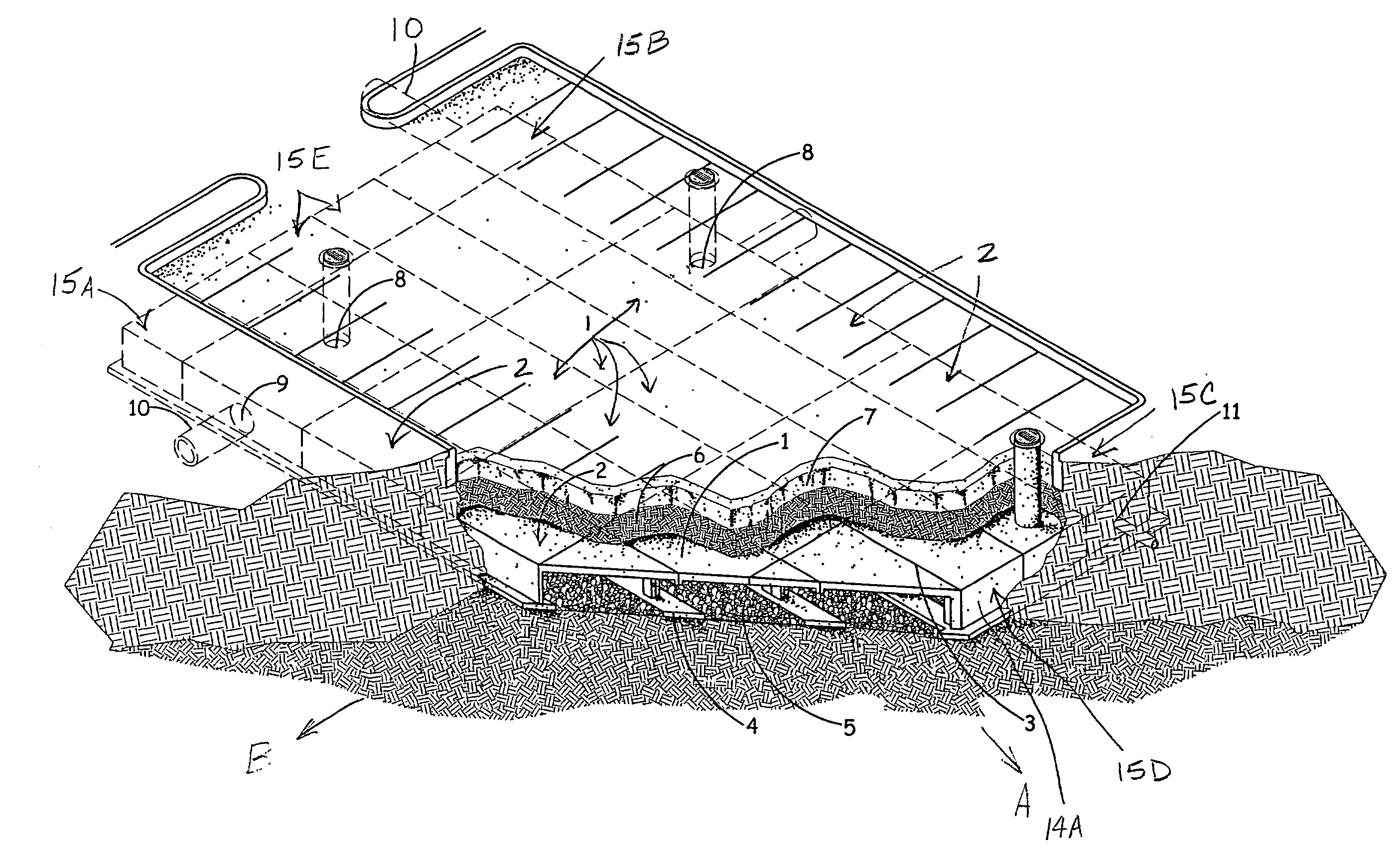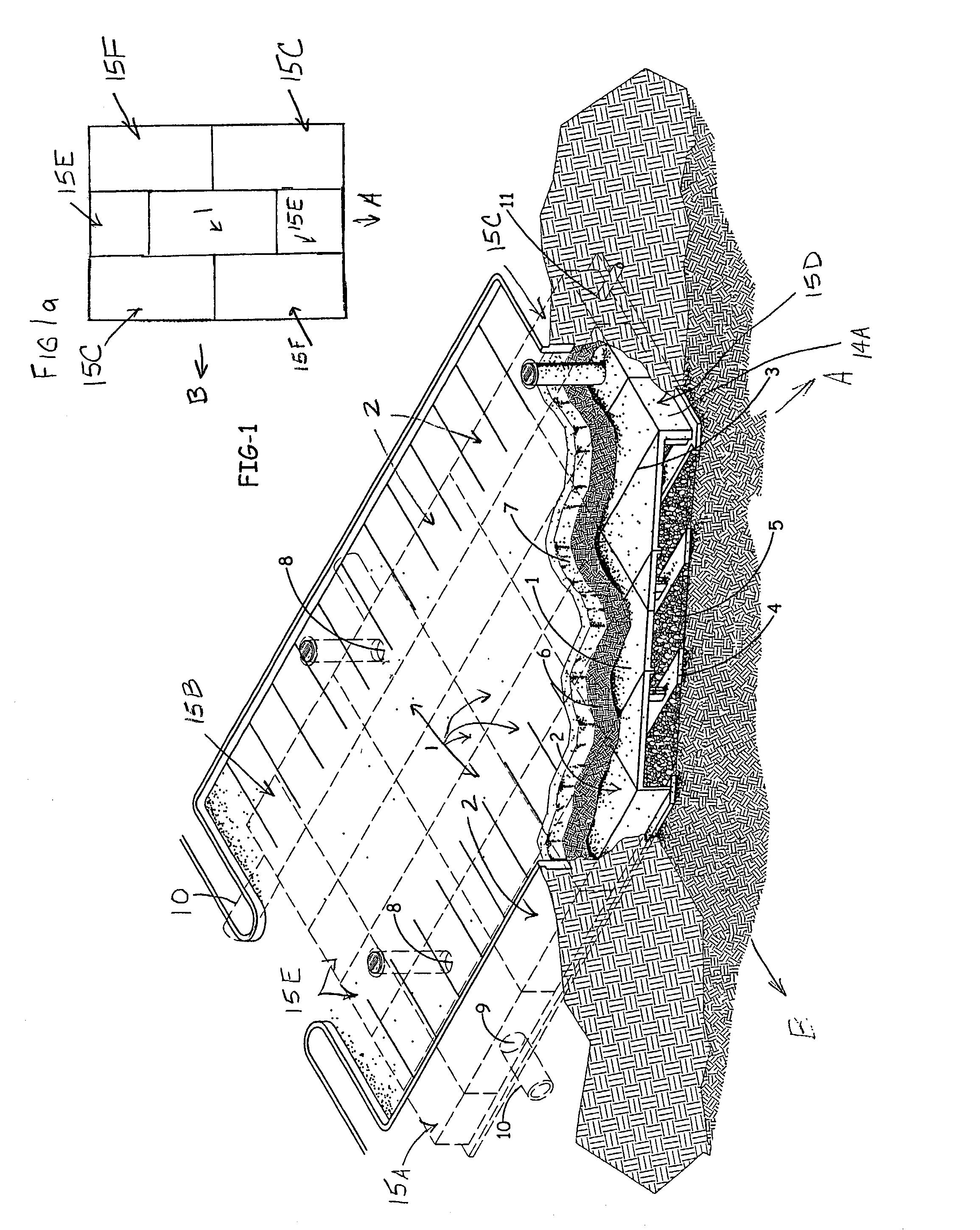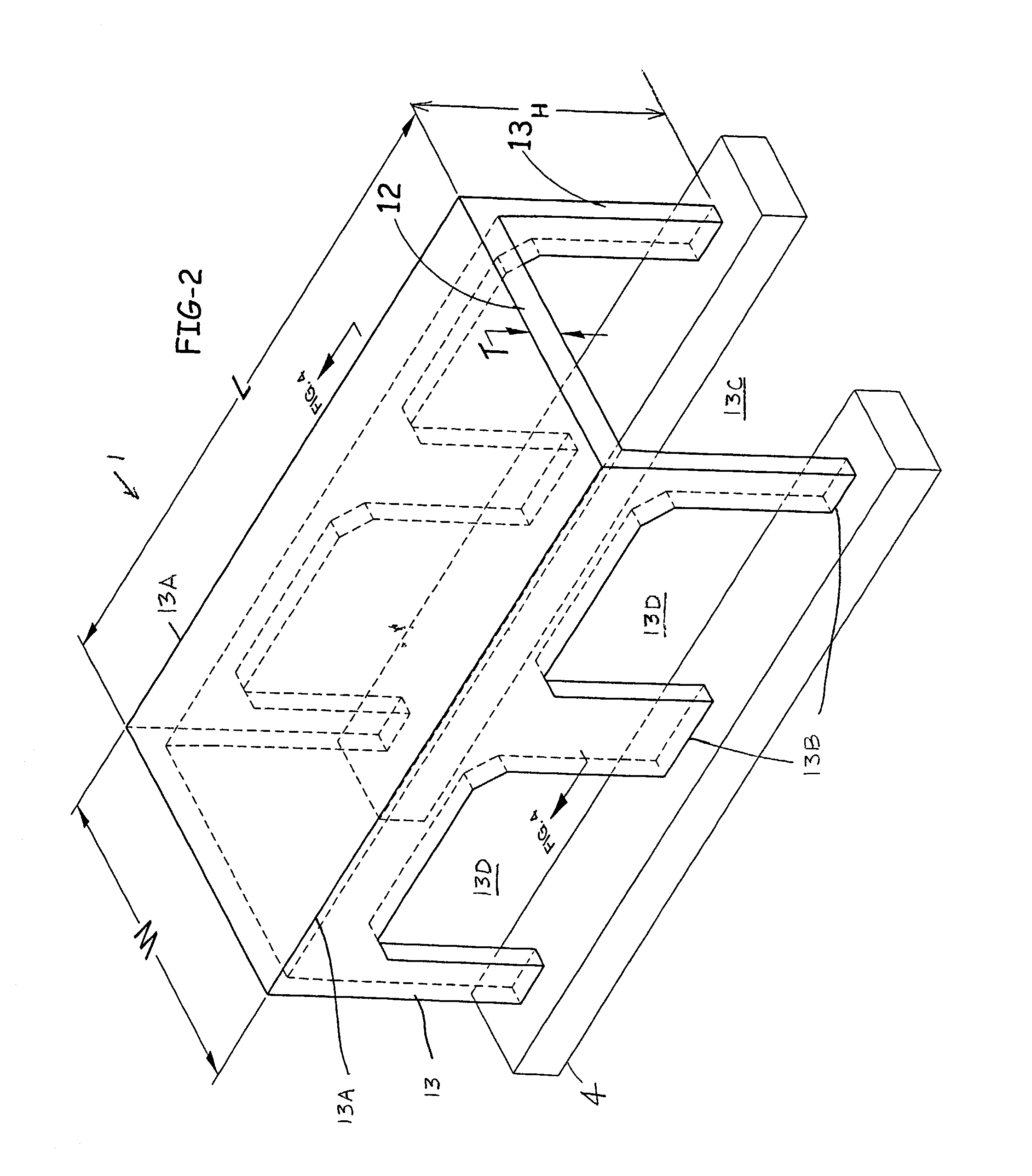Methods and modules for an underground assembly for storm water retention or detention
- Summary
- Abstract
- Description
- Claims
- Application Information
AI Technical Summary
Benefits of technology
Problems solved by technology
Method used
Image
Examples
first embodiment
[0047]FIG. 1 illustrates an underground assembly for storm water retention and / or detention. The assembly of FIG. 1 is composed of a plurality of modules, such as interior modules, generally indicated at 1, and perimeter or side modules, generally indicated at 2. Each module will be described in more detail below. In FIG. 1 assemblies of modules are preferably placed in side-by-side and end-to-end configuration beneath a ground surface although the modules may also be spaced apart, as described below. Joints 3 between the modules are typically sealed with a sealant or tape such as, for example, bitmastic tape, wraps, filter fabric or the like. The length or width of the assembly of modules forming the channel is unlimited and may form irregular shapes such as the assembly illustrated in FIG. 9, which will also be described in detail.
[0048]In FIG. 1, the modules are preferably placed on footings or pads 4 which are positioned in a parallel and spaced orientation. The footings 4 may b...
second embodiment
[0056]Turning now to FIG. 3, a module is illustrated in the form of a side module 2, which was previously identified in the assembly FIG. 1. The side module 2 is disposed peripherally of the interior module 1 in FIG. 1 and has some of the same parts such that the same numbers will be used to designate like parts. In FIG. 3 the side module 2 includes a corresponding substantially horizontally disposed deck portion 12 and two substantially vertically disposed side portions 13, 14 which extend from opposite longitudinal sides 13A of the side module deck portion. The side portions 13, 14 are preferably integrally connected to the deck portion. Together, the deck portion and side portions define a corresponding longitudinal channel 13E. The side portion 13 includes openings defined therein which defines lateral channels 13F, while another side portion 14 is without openings. The longitudinal and lateral channels 13E, 13F of the module 2 fluidly communicate with one another to allow relat...
fifth embodiment
[0059]In FIG. 1, a module is illustrated in the form of front end modules 15D which are placed between the front corner modules, only one front corner module 15C being shown. In FIG. 1, each end module 15D defines one longitudinal channel along its length and two lateral channels defined by its two side portions, similar to the previously described module 1, except that the front end module 15D further has a substantially vertically disposed end wall 14A which is preferably used to define an assembly outer boundary.
PUM
 Login to View More
Login to View More Abstract
Description
Claims
Application Information
 Login to View More
Login to View More - R&D
- Intellectual Property
- Life Sciences
- Materials
- Tech Scout
- Unparalleled Data Quality
- Higher Quality Content
- 60% Fewer Hallucinations
Browse by: Latest US Patents, China's latest patents, Technical Efficacy Thesaurus, Application Domain, Technology Topic, Popular Technical Reports.
© 2025 PatSnap. All rights reserved.Legal|Privacy policy|Modern Slavery Act Transparency Statement|Sitemap|About US| Contact US: help@patsnap.com



